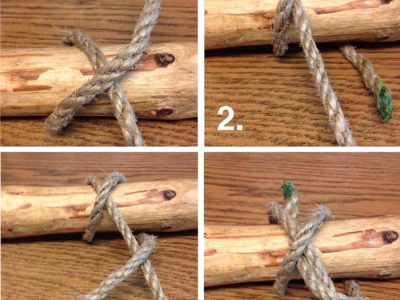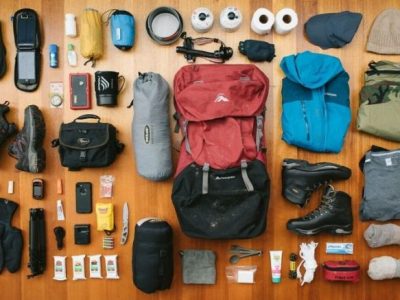Camping hammock setup for scouts offers a comfortable and convenient alternative to traditional ground tents, providing numerous benefits and creating memorable outdoor experiences. This guide delves into the essential aspects of hammock camping, ensuring a safe and enjoyable adventure for young scouts.
From selecting the right hammock and suspension system to choosing accessories and finding ideal campsites, this comprehensive guide covers everything scouts need to know about hammock setup.
Hammock Selection
Selecting the right hammock is crucial for scouts, as it can significantly enhance their camping experience. Here are key factors to consider:
Materials
Hammocks come in various materials, each with its own advantages and disadvantages:
- Nylon:Lightweight, durable, and breathable; ideal for warm climates.
- Polyester:Similar to nylon but more resistant to stretching and fading.
- Canvas:Heavy-duty, durable, and water-resistant; suitable for colder climates.
Size and Weight
Hammock size and weight should be tailored to the user’s height and weight:
- Length:Typically ranges from 9 to 11 feet, with longer hammocks accommodating taller individuals.
- Width:Usually between 4 and 6 feet, wider hammocks providing more comfort.
- Weight:Varies depending on material and size; lighter hammocks are easier to pack and carry.
Camping Conditions
Consider the specific camping conditions when choosing a hammock:
- Temperature:Insulated hammocks or underquilts are necessary for cold weather.
- Rain:Waterproof or water-resistant hammocks are essential for wet environments.
- Bugs:Hammocks with bug nets provide protection from insects.
Suspension System

A reliable suspension system is crucial for a comfortable and secure hammock experience. It connects the hammock to anchor points, providing support and stability. Various suspension systems exist, each with its own advantages and drawbacks.
Ropes
- Pros:Ropes are lightweight, inexpensive, and versatile. They can be easily adjusted and used to create different suspension configurations.
- Cons:Ropes can stretch over time, requiring periodic re-tightening. They can also be susceptible to fraying and damage, especially if exposed to sharp objects or excessive friction.
Straps
- Pros:Straps are more durable than ropes and less likely to stretch or fray. They come in various lengths and widths, allowing for customization. Some straps have built-in loops or buckles for easy attachment.
- Cons:Straps are generally heavier and bulkier than ropes. They can also be more expensive.
Carabiners, Camping hammock setup for scouts
- Pros:Carabiners provide a quick and secure way to connect the hammock to anchor points. They are strong and durable, making them suitable for heavy loads.
- Cons:Carabiners can be expensive and may require specialized knowledge or tools for proper use. They can also be noisy if not properly secured.
Setting Up a Suspension System
To set up a suspension system securely, follow these steps:
- Choose suitable anchor points that are strong and stable, such as trees or poles.
- Determine the desired height and distance between the anchor points based on the hammock’s size and the available space.
- Attach the suspension system to the anchor points and adjust it to the appropriate length. Ensure that the hammock is level and hangs at a comfortable height.
- Tighten all knots or buckles securely to prevent the hammock from sagging or slipping.
- Double-check the stability of the suspension system by gently testing it before using the hammock.
Hammock Accessories

Elevate your hammock camping experience with essential accessories that enhance comfort, protection, and convenience.
Tree Straps
Tree straps are indispensable for securing your hammock to trees without damaging their bark. Look for straps made of durable materials like nylon or polyester with reinforced stitching. Choose straps that are long enough to accommodate the distance between trees and allow for adjustments.
Bug Nets
Bug nets provide a protective barrier against pesky insects, ensuring a peaceful night’s sleep. Opt for nets made of fine mesh that effectively keeps bugs out while allowing airflow. Consider nets with a zipper or drawstring for easy entry and exit.
Rain Tarps
Rain tarps shield your hammock and gear from rain and wind. Choose tarps made of waterproof and breathable materials like nylon or polyester. Select a tarp that provides ample coverage to protect your hammock from all sides. Secure the tarp tightly with guylines and stakes for stability.
Site Selection and Preparation

Selecting an appropriate campsite is crucial for a comfortable and safe hammock experience. Consider these factors when choosing a location:
Tree Spacing
Identify two sturdy trees that are approximately 10-15 feet apart, providing sufficient space for your hammock and suspension system.
Ground Conditions
Avoid areas with rocks, roots, or uneven ground. Clear the campsite of any debris or obstacles that could damage your hammock or disturb your sleep.
Weather Factors
Choose a campsite sheltered from strong winds or rain. Avoid areas near water bodies or low-lying areas that may be prone to flooding.
Site Preparation
Clear the ground beneath your hammock of any debris or vegetation. Dig a small trench around the perimeter of your campsite to drain any excess water.
Safety Considerations

Hammock camping offers a unique and comfortable outdoor experience, but it also comes with potential hazards. Understanding these risks and implementing proper safety measures are crucial for a safe and enjoyable hammock adventure.
Proper knot tying is essential for ensuring the hammock’s stability and preventing falls. Use strong, reliable knots such as the bowline or taut-line hitch, and double-check their tightness before use. Additionally, distribute weight evenly within the hammock to prevent tipping or uneven stress on the suspension system.
Fall Prevention
Fall prevention is paramount in hammock camping. Choose a campsite with ample clearance above the ground and avoid hanging the hammock too high. Use tree straps or ropes to secure the hammock to trees, and ensure they are strong enough to support your weight and any gear you may bring.
Always test the hammock’s stability before getting in, and consider using a safety line or fall-arrest system for added protection.
Hammock Setup Variations

Beyond the basic setup, hammocks offer versatility in their placement and configurations to adapt to different camping scenarios. Understanding these variations empowers scouts with the knowledge to enhance their comfort and safety while embracing the joys of hammock camping.
When multiple hammocks are available, scouts can create a communal sleeping area by suspending them close together. This setup fosters camaraderie and facilitates group conversations. Alternatively, setting up hammocks at varying heights can create a layered effect, maximizing space utilization and providing privacy.
Hammock Shelters
For extended camping or inclement weather, scouts can transform hammocks into shelters by adding a tarp or rain fly. Suspending the tarp above the hammock provides protection from rain and wind, while leaving the sides open for ventilation. By incorporating a ground cloth or sleeping pad, scouts can further enhance insulation and comfort.
Creative Hammock Setups
Scouts can unleash their creativity by experimenting with innovative hammock setups. Suspending a hammock between two trees and a third support, such as a rock or log, creates a unique and stable configuration. For added comfort, scouts can attach a sleeping pad or quilt to the hammock, ensuring a cozy and elevated sleeping experience.
By embracing these variations and creative ideas, scouts can elevate their hammock camping experiences, ensuring comfort, convenience, and unforgettable memories in the great outdoors.
Outcome Summary

By following the tips and guidelines Artikeld in this guide, scouts can confidently set up their hammocks in various camping scenarios, maximizing comfort, safety, and the overall enjoyment of their outdoor adventures.
FAQ Overview: Camping Hammock Setup For Scouts
What are the key considerations when choosing a hammock for scouts?
When selecting a hammock for scouts, consider factors such as material durability, size, weight, and suitability for different camping conditions.
How do I ensure a secure suspension system for my hammock?
Properly set up a suspension system using sturdy ropes, straps, or carabiners, ensuring equal weight distribution and secure attachment to trees.
What essential accessories should I bring for hammock camping?
Essential accessories include tree straps for protecting trees, bug nets for insect protection, and rain tarps for shelter from the elements.




